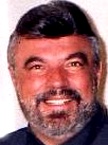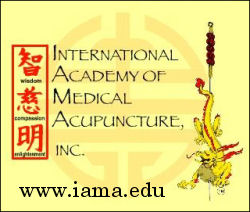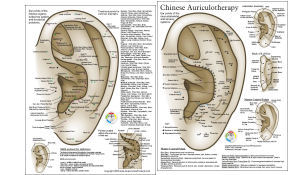Acupuncture & TCM Articles

Acupuncture Articles
by John A. Amaro L.Ac., Dipl.Ac.(NCCAOM), DC
 Dr. Amaro is an internationally known author, lecturer and practitioner beginning his practice of Acupuncture and Chiropractic in 1971. He has led 13 diplomatic Acupuncture study tours of The People's Republic of China escorting more than 500 doctors and practitioners. He has personally studied Acupuncture in nine separate Asian nations. Dr. Amaro is an internationally known author, lecturer and practitioner beginning his practice of Acupuncture and Chiropractic in 1971. He has led 13 diplomatic Acupuncture study tours of The People's Republic of China escorting more than 500 doctors and practitioners. He has personally studied Acupuncture in nine separate Asian nations.
He has received Certification in Acupuncture through the Columbia Institute of Chiropractic in 1973. This was one of the first Acupuncture postgraduate education programs for physicians in North America commencing in 1972.
He has been certified by the Waseda Acupuncture College in Tokyo, Japan in 1974 and graduated from the Chinese Medical Institute, Kowloon, China in 1976. He had previously taken postgraduate studies at the Tai Chung Medical School Taipei, China 1973.
"Now Hear This" -- Part 2
John A. Amaro L.Ac., Dipl.Ac.(NCCAOM), DC
As I write this I am at 35,000 feet over the Pacific, en route to Australia to present a week-long lecture series in Melbourne.
Now, I can safely assume everyone knows where Australia is; however, it's a pretty good guess not everyone knows where Melbourne is located. A quick scan of a map of Australia would not only show you the location of Melbourne but would also give you the relationship to other major cities, such as Sydney, Adelaide, Perth, etc.
Even though this column is not a geography lesson, geography will play a major part in your understanding of this healing art.
Auriculotherapy may very well be the easiest system of reflex therapy to learn and incorporate into your practice, and I will share it with you in this column.
The concepts and techniques of ear acupuncture have been a vital part of Asian and European medicine for centuries. As in the history of virtually any healing method, it has unfortunately been made more complicated, as teachers (especially in the last 20 years), attempt to enhance the ideas formulated by its discoverers. In reality, what is being taught as a complex system is extremely pure and simple.
Thousands of years ago, the Chinese and Indians observing the ear, visualized the resemblance of an inverted fetus. Correlating the position of this inverted fetus to the structural and visceral anatomy of the human body, a system of reflex therapy was established and today ranks among the premier systems of acupuncture, worldwide.
During the first days of fetal development, a projection develops which will ultimately become the external ear. It has been postulated that the ear retains its communicative network with the central nervous system through its fetal developments.
Throughout the centuries, correlations have been made to specific parts of the body, to specific points on the ear. By stimulating these specific points on the ear, one may have a profound affect on its corresponding body parts.
Even though most practitioners unfortunately still regard the needle as the method of choice for stimulation of acupuncture points, the needle is perhaps the mode of stimulation least recommended in lieu of electronic, laser or simple digital pressure.
The Chinese hospitals and institutes regard ear acupuncture as one of the most important aspects of traditional Chinese medicine, and on any given street corner in any city of the People's Republic of China, or anywhere in Asia for that matter, one will observe a host of people wearing "acupatches" -- small millet seeds attached by way of adhesive tape for continued stimulation of the acupoint. In the free world, the "acupatches" available to us are small stainless-steel, 1 mm granules attached by way of flesh-colored adhesive making them practically indistinguishable.
One must remember, auriculotherapy is simply a "this for that system," that is, we use "this" point for "that" condition.
I strongly contend once one becomes familiar with the ear reflex points, common sense and relying on your knowledge of the basic sciences is generally sufficient to successfully employ auriculotherapy.
Auriculotherpy (Ear Acupuncture) Books
Auriculotherpy is one of the most commonly used microsystems. Auriculotherpy alone can produce excellent results.
Geography becomes important as we should simply look at the ear as you would a map of Australia or you "Aussies" look upon it as a map of the U.S. That is to say, in any country there are large cities and small towns strategically placed in certain locations within the continent. If one will simply look upon the ear chart in my last column as a continental map and become familiar with the "cities" on that map, you will be three-quarters of the way to becoming proficient in auriculotherapy.
Remember, there are no two ears exactly alike, including the right and left ear of the same person. Therefore, approximating the point using the chart will more than suffice.
Possibly the greatest unanswered question is which ear do I use? Some authorities say always use the ear on the side of involvement whereas an equal number of others say use the opposite ear. I try to cover all bases by using both ears. However, if time is a factor, I will generally treat the ear of the dominant side -- in other words, is the patient right-handed or left-handed?

Become familiar with the following ear points and begin putting them to use. In the next issue I will present a number of specific formulae for specific conditions that historically have a success rate above 90 percent. Don't miss next month's article.
Shen Men (55) Used for any and all pain, paresthesia or for that matter, anything. Sympathetic (61) Same as Shen Men.
Wonderful Point Known as point "zero" on some charts, relates to CV8 (shrine of God), does what it suggests.
Internal Secretion (22) On the floor of the ear as indicated on the chart. Taps into the endocrine system.
Antihistamine
(60 and 31) Powerful point in allergies.
Adrenal (13) Very useful in pain or anytime, physiologically, the adrenal needs a boost.
Brain Stem (25) Any neurologic, psychologic or physiologic condition.
Back of Head (29) Same as brainstem.
Forehead (33)
Temple (35) Sometimes known as "the sun."
Vertex (36)
The foregoing three points are very useful in any head syndrome.
Fingers (62)
Wrist (67)
Elbow (66)
Shoulder (65 and 64)
Hips (50)
Knee (49 and 49-1)
The above are self-explanatory
Along the ridge of the ear, from sympathetic (61) all the way to brainstem (25), represents the entirety of the lumbar, thoracic, and cervical vertebrae.
Even though some practitioners utilize expensive sophisticated instrumentation to isolate an individual vertebral segment or specific digit of the hand or foot through the ear points, the time required to do so is not of any more clinical value to the patient than a generalized treatment to the area.
Become familiar with the other points not mentioned, and please be advised just because I did not specifically mention them, it's not because they are not important.
Last month in Part 1 of "Now Hear This," I introduced you to a system of reflex therapy known as ear acupuncture. I asked you to save the article for future reference as the remainder of the series will hinge on the graphic illustrated in the April 25, 1990 issue of Dynamic Chiropractic.
If for some reason you failed to save this article, a stamped, self-addressed envelope will insure your ear chart.
| 